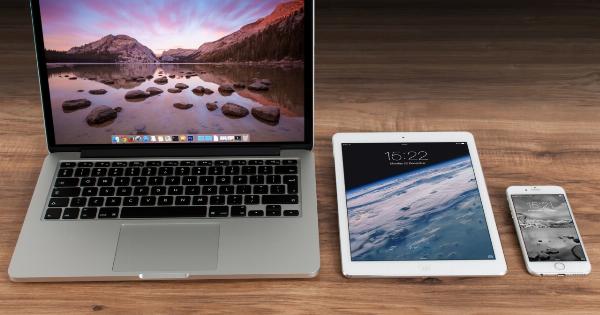Mobile devices have become an essential part of our daily lives. From smartphones to tablets, these devices allow us to stay connected, entertained, and informed.
However, the constant use of mobile devices can have a detrimental effect on our posture and spinal health. In this article, we will explore how mobile devices can damage your spine and provide tips on how to mitigate these risks.
The Impact of Forward Head Posture
One of the significant ways mobile devices can damage your spine is through the development of forward head posture.
When we use smartphones or tablets, we often hunch over to look at the screen, leading to an increased strain on the neck and upper back. The average human head weighs around 10 to 12 pounds, but the stress on the spine can increase up to 60 pounds when the head is tilted forward at a 60-degree angle.
Continuous forward head posture can result in a loss of the natural curve of the cervical spine, leading to chronic pain, muscle strain, and even neurological problems.
The increased strain on the neck and upper back can also cause tension headaches and decreased lung capacity.
Text Neck Syndrome
Text neck syndrome is a term used to describe the posture adopted while using a mobile device for extended periods. When we use our devices, we tend to drop our chin, flexing the neck forward and consequently curving the upper back.
This posture places excessive stress on the spine, leading to a range of musculoskeletal issues.
Symptoms of text neck syndrome include neck and shoulder pain, upper back pain, headaches, and numbness or tingling in the arms or hands.
The constant strain on the neck can also cause premature degeneration of the spine, leading to conditions like herniated discs and arthritis.
The Impact on Children
Children and teenagers are particularly vulnerable to the negative effects of mobile device use on their spines. With the increasing prevalence of smartphones and tablets among younger age groups, there has been a rise in posture-related problems.
The developing spinal column of children is more susceptible to the stresses caused by poor posture. Prolonged use of mobile devices can lead to abnormal spinal growth and development, resulting in long-term spinal issues.
It is crucial for parents to monitor their children’s device usage and encourage healthy posture habits from an early age.
Ergonomic Tips for Mobile Device Use
While it may be challenging to reduce the use of mobile devices in today’s digital age, there are several measures you can take to minimize the damage to your spine:.
- Keep your device at eye level: Instead of bending your neck forward, bring your device up to eye level. This will help maintain a more neutral position for your neck and reduce strain on the spine.
- Take regular breaks: Make a conscious effort to take frequent breaks from using your mobile device. Stretch your neck, shoulders, and back during these breaks to relieve any accumulated tension.
- Practice good posture: Be mindful of your posture while using your device. Sit up straight with your shoulders relaxed and avoid slouching or hunching over.
- Use voice commands: Whenever possible, use voice commands or voice-to-text features on your device to reduce the need for prolonged periods of typing or texting.
- Invest in ergonomic accessories: Consider using ergonomic accessories such as a tablet stand or a wireless keyboard to improve your comfort and posture while using your mobile device.
Exercises to Strengthen the Spine
To counteract the negative effects of mobile device use on the spine, incorporating regular exercises and stretches into your routine can be beneficial. Here are some exercises specifically designed to strengthen the spine:.
- Chin tucks: Sit up straight and gently tuck your chin in toward your neck, keeping your gaze forward. Hold for a few seconds, then release. Repeat this exercise multiple times throughout the day to strengthen the muscles at the front of your neck.
- Upper back extensions: Stand with your back against a wall and your feet shoulder-width apart. Place your hands behind your head and gently arch your upper back against the wall. Hold the position for a few seconds, then return to the starting position. Repeat this exercise several times to strengthen the muscles in your upper back.
- Cat-camel stretch: Start on all fours with your hands directly under your shoulders and your knees under your hips. Gently arch your spine upward, tucking your chin toward your chest. Hold for a few seconds, then release and let your belly drop toward the floor, lifting your head and tailbone slightly. Repeat this stretch to improve flexibility in your spine.
- Thoracic rotations: Sit on a chair with your feet flat on the floor. Place one hand behind your head and gently rotate your upper body to one side, looking over your shoulder. Hold the position for a few seconds, then return to the starting position and repeat on the other side. This exercise helps to strengthen and mobilize the thoracic spine.
- Bridge pose: Lie on your back with your knees bent and your feet flat on the floor. Slowly lift your hips off the ground, engaging your glutes and core muscles. Hold the position for a few seconds, then lower your hips back down. Repeat this exercise to strengthen the muscles in your back and buttocks.
Conclusion
While mobile devices offer many advantages, it is essential to be aware of the potential risks they pose to our spinal health. The constant use of mobile devices can lead to forward head posture, text neck syndrome, and various musculoskeletal issues.
By incorporating ergonomic habits, taking breaks, and performing spine-strengthening exercises, we can mitigate the damage caused by mobile device usage and maintain a healthy spine.































